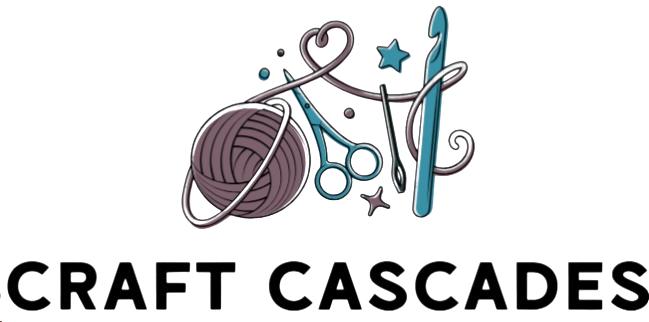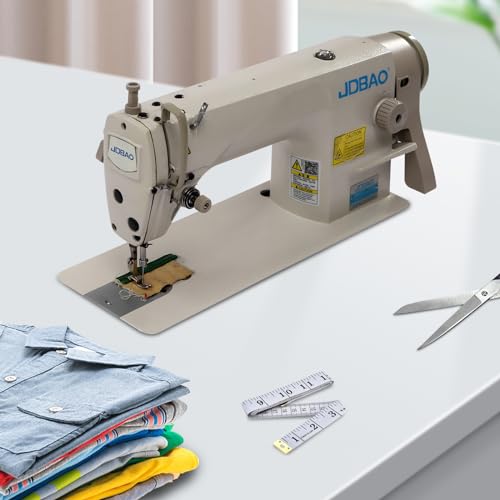Finding the right sewing machine for auto upholstery can make the difference between professional-looking results and frustration. Auto upholstery demands machines that can handle thick materials, maintain consistent stitching, and withstand the rigors of heavy-duty projects. Whether you’re reupholstering car seats, creating custom door panels, or crafting a new convertible top, the machine you choose matters.
We’ve researched and compiled the five best sewing machines specifically capable of handling automotive upholstery projects. From powerful motors to specialized feeding mechanisms, these machines offer the features you need to tackle even the most challenging automotive fabrics including vinyl, leather, and heavy-duty canvas.
SINGER Heavy Duty 4452 Sewing Machine
The SINGER Heavy Duty 4452 lives up to its name with a motor that’s 60% stronger than standard machines, making it an excellent entry-level option for auto upholstery projects. This workhorse combines durability with versatility, featuring a sturdy metal frame that keeps all mechanisms in perfect alignment even when working with thick automotive fabrics.
With 32 built-in stitches including basic, decorative, and stretch options, this machine offers enough variety for most auto upholstery needs. The included walking foot accessory is particularly valuable for auto upholstery work, helping to feed multiple layers of thick material evenly through the machine.
Best for:
DIY enthusiasts and hobbyists tackling light to medium auto upholstery projects like seat covers, door panels, and headliners. It’s ideal for those who need a reliable machine that can handle occasional heavy-duty work without the investment of an industrial model.
Pros:
- Powerful motor handles multiple layers of automotive fabrics
- Sewing speed up to 1,100 stitches per minute for efficient project completion
- Includes essential accessories for upholstery work (walking foot, heavy-duty needles)
- Stainless steel bedplate provides smooth fabric feeding
- Affordable entry point for auto upholstery compared to industrial machines
Cons:
- May struggle with the thickest automotive materials like heavy leather
- Not designed for continuous commercial-grade use
- Limited throat space restricts maneuverability for larger projects
Overall Rating:
Heavy Duty Leather Sewing Machine for Canvas Upholstery
This specialized heavy-duty leather sewing machine is purpose-built for tackling demanding auto upholstery projects. With its powerful motor and robust construction, it’s designed specifically for thick materials like leather, vinyl, and canvas that are common in automotive applications. The compound feed walking foot mechanism ensures even feeding of multiple layers without slipping or puckering.
What sets this machine apart is its industrial-grade capabilities in a more compact and affordable package. The adjustable stitch length allows for precise control over your stitching, while the high clearance presser foot accommodates thick automotive materials with ease.
Best for:
Serious DIYers and small auto upholstery shops requiring a dedicated machine for leather and heavy materials. This machine bridges the gap between consumer and full industrial models, making it perfect for those who need professional results without the space or budget for commercial equipment.
Pros:
- Specialized for thick materials like leather, vinyl, and canvas
- Walking foot mechanism prevents material slippage
- High clearance presser foot accommodates bulky automotive materials
- Adjustable stitch length for various upholstery applications
- Durable all-metal construction for long-term reliability
Cons:
- Limited to straight stitching only
- Steeper learning curve than consumer machines
Overall Rating:
Brother XM2701 Sewing Machine
The Brother XM2701 offers a budget-friendly entry point for those just beginning to explore auto upholstery projects. While not specifically designed for heavy-duty work, this versatile machine can handle lighter automotive fabrics when paired with the right needles and techniques. Its 27 built-in stitches provide options for various decorative and functional applications.
What makes this machine appealing for beginners is its user-friendly design with an automatic needle threader, jam-resistant drop-in top bobbin, and clear threading diagrams printed right on the machine. These features allow newcomers to focus on learning upholstery techniques rather than struggling with machine operation.
Best for:
Beginners and occasional users working primarily with lighter automotive fabrics such as headliners, simple seat covers, and accent pieces. It’s ideal for those wanting to test the waters of auto upholstery without a significant initial investment.
Pros:
- Affordable entry point for basic auto upholstery projects
- User-friendly features make it accessible for beginners
- Lightweight and portable for small workspaces
- Versatile with 27 built-in stitches for various applications
- Free arm capability helps with cylindrical pieces like armrests
Cons:
- Underpowered for thick leather or multiple layers of heavy material
- Plastic components may not withstand rigorous auto upholstery demands
- Limited throat space restricts work on larger projects
Overall Rating:
6500RPM Industrial Sewing Machine for Leather Upholstery
This commercial-grade industrial sewing machine represents a significant step up in capability for serious auto upholstery work. With a powerful pure copper motor capable of 6,500 stitches per minute, it’s designed for professional-level productivity and performance. The compound feed walking foot system ensures even feeding of multiple layers of thick automotive materials.
What distinguishes this machine is its true industrial construction with a cast iron body, servo motor, and oil lubrication system that allows for continuous operation. The extra-high presser foot lift accommodates the thickest automotive materials, while the large bobbin capacity reduces interruptions during large projects.
Best for:
Professional auto upholstery shops and serious enthusiasts tackling heavy-duty projects regularly. This machine is ideal for those working with thick leather, heavy canvas, and multiple layers who need reliable performance and speed for commercial applications.
Pros:
- True industrial power handles the thickest automotive materials with ease
- Exceptional speed (6,500 SPM) for efficient production
- Compound feed walking foot system for perfect material handling
- Durable cast iron construction built for continuous operation
- Servo motor provides precise speed control and energy efficiency
Cons:
- Significant investment compared to consumer machines
- Requires dedicated space and proper table mounting
- Steeper learning curve for operation and maintenance
Overall Rating:
SINGER Heavy Duty 500 Classic Sewing Machine
The SINGER Heavy Duty 500 Classic represents the latest evolution in SINGER’s heavy-duty line, offering enhanced capabilities for auto upholstery projects. With its strong motor and all-metal internal frame, this machine provides the stability and power needed for working with automotive fabrics while maintaining user-friendly features for hobbyists and DIYers.
This machine strikes an excellent balance between capability and accessibility with 23 built-in stitches, automatic needle threader, and one-step buttonhole. The stainless steel bedplate ensures smooth fabric feeding, while the extra-high presser foot lifter accommodates thicker automotive materials.
Best for:
DIY auto upholstery enthusiasts who need a reliable machine for regular projects involving medium to heavy materials. It’s perfect for those who want a step up from entry-level machines without the complexity or cost of industrial models.
Pros:
- Enhanced motor power handles multiple layers of automotive fabrics
- Durable metal frame ensures stability when working with heavy materials
- High-speed capability (1,100 stitches per minute) for efficient project completion
- Extra-high presser foot lifter for thick automotive materials
- Accessory kit includes tools useful for upholstery work
Cons:
- May struggle with the heaviest automotive leathers
- Limited workspace for larger auto upholstery projects
Overall Rating:
Factors to Consider When Choosing Sewing Machine for Auto Upholstery
Motor Power and Construction
The most critical factor for auto upholstery work is motor power. Automotive materials like vinyl, leather, and heavy canvas require significantly more power than standard fabrics. Look for machines with heavy-duty or industrial-rated motors. Metal frame construction is also essential for stability when working with thick materials, as plastic frames can flex under pressure, causing misaligned stitches.
Feeding Mechanism
A walking foot or compound feed mechanism is nearly essential for auto upholstery. These specialized feeding systems move both the top and bottom layers of fabric simultaneously, preventing slippage and puckering when working with thick, slippery automotive materials. While some domestic machines accept walking foot attachments, machines with built-in walking foot mechanisms perform better for serious upholstery work.
Stitch Quality and Adjustability
Auto upholstery demands strong, consistent stitches that can withstand stress and use. Look for machines that produce even stitches and allow for adjustment of both stitch length and tension. For most automotive applications, a quality straight stitch is more important than having numerous decorative options, though zigzag capability can be useful for certain applications.
Needle and Thread Capacity
Auto upholstery requires heavy-duty needles (sizes 16-18 or higher) and thick, strong thread. Ensure your machine can accommodate these larger needles and thread sizes. Industrial machines typically have larger bobbins, allowing for more continuous sewing with heavy thread before needing replacement.
Workspace and Throat Size
Consider the size of your typical projects. Larger items like seat covers require more workspace to maneuver the fabric. Machines with longer arms (often called “long arm” machines) or larger throat space between the needle and the body of the machine make handling bulky automotive materials much easier.
Budget and Skill Level
While industrial machines offer the best performance for auto upholstery, they represent a significant investment and have steeper learning curves. Consider your budget, skill level, and how frequently you’ll use the machine. For occasional projects, a heavy-duty domestic machine might suffice, while professionals or serious enthusiasts will benefit from investing in industrial-grade equipment.
Conclusion
Selecting the right sewing machine for auto upholstery depends on your specific needs, project scale, and budget. For professionals and serious enthusiasts, the 6500RPM Industrial Sewing Machine offers unmatched power and durability. DIY enthusiasts will find the SINGER Heavy Duty models provide a good balance of capability and accessibility, while beginners might start with the Brother XM2701 for lighter projects.
Remember that the right accessories—including heavy-duty needles, appropriate thread, and walking foot attachments—can significantly enhance your machine’s performance with automotive materials. By considering the factors we’ve outlined and matching them to your specific requirements, you’ll be well-equipped to choose a sewing machine that delivers professional results for your auto upholstery projects.





